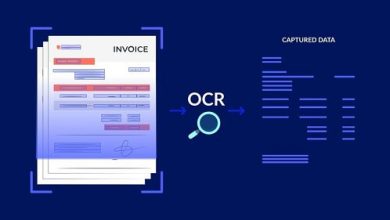How to Calculate Margin for Forex Transactions?

As you know, margin is one of the most important concepts in trading. Many investors use this term when discussing trading in the Forex and CFD markets. If this is a completely new concept to you, then this topic is not worth avoiding. On the contrary, it is worth understanding this issue in more detail, studying it and this will help to become a successful trader. Therefore, we will consider this topic in more detail further and you will find out, How to Calculate Margin for Forex Transactions?
What is margin in forex trading and how it works?
In simple terms, the margin in Forex trading is determined as follows:
Margin is the part of the funds in the trading account used as collateral to open a position, and not a fee or transaction cost. That is, in trading, these are collateral that a trader must deposit into his account to cover part of the risk that the trader creates for the broker. It is usually a part of a trading position, which is expressed as a percentage.
The margin that your Forex broker requires will determine the maximum leverage you can use on your trading account. But how to calculate forex margin? First of all, it is worth understanding that each broker, DotBig or Just2Trade, has different margin requirements. Therefore, before choosing a company and start trading on margin, it is important to study this issue. It should be noted that DotBig has one of the most favorable conditions.
Important! You should understand that the result of margin trading can be both positive and negative, while both potential profit and potential losses can significantly increase.
Why Forex margin calculation is so important?
Margin calculations are very important first of all to understand the basics of Forex trading. Otherwise, problems and risks of losing profit are not excluded. After all, making a profit is the main goal in both trading and investing. However, transactions are also carried out on the world’s exchanges for other purposes, such as sophisticated strategies for protecting business and capital through hedging. Therefore, it is not always correct to call the financial result from all types of transactions the word “profit”. In the financial world, cash is referred to as margin.
It is worth noting that, depending on the purpose of using the margin, it can be free, hedged, locked (and not only). All these derivatives, in fact, denote the amount of money, which is very important to calculate.
How does the margin affect the leverage?
There are several formulas. To calculate the margin, first of all, the amount of the transaction, the size of the leverage and the exchange rate are determined.
Leverage is determined by the amount borrowed for every dollar on the trader’s balance sheet. The standard indicator is 1:100. But this value can be 1 to 200 or 500 and even 2000. With a standard indicator of 1 to 100, a trader has the opportunity to make transactions 100 times greater than the account balance, leaving a deposit to the broker. With a balance of $100 and leverage of 1:100, you can make trades worth $10,000. With a leverage of 1:200 for $20,000, and so on. The higher the leverage, the larger the amount of a possible transaction.
The trader determines the amount of the transaction himself, depending on his balance. If everything is clear with this, then you can proceed to the margin calculations. The margin for direct quotes is calculated as follows:
To calculate, you need to know the amount of the transaction and the size of the leverage. The formula is: Margin=Trade Amount/Leverage. Using this simple formula, you will get the margin in just a few seconds.
One of the main attractive factors in Forex trading is the ability to use leverage and margin. This allows you to invest a small amount of capital to open and hold much larger positions.
Risks and benefits of margin trading in the Forex market?
Margin trading has a number of advantages and disadvantages which can be found below.
| Pros | Cons |
| The ability to increase the potential for profit in transactions and increase the initial investment fairly quickly. This is especially true when trading currencies, whose average daily fluctuations do not allow traders to earn significant amounts in transactions with small investments.Marginality also puts the trader in front of the need to calculate the risks, since negligence in this regard when using a large leverage will quickly lead to disastrous consequences. | Opportunity for a high return on investment. A trader or investor can risk too much of their capital and suffer losses quicklyAt the initial stage, traders are blinded by the prospect of quickly multiplying their total profits by increasing the volume of transactions.Presence of so-called price gaps and their impact on the deposit |
forex trading margin there is also one more disadvantage – it is its availability for all traders, regardless of their experience. Beginners rarely do enough self-education before starting to trade. In addition, there is too much emotional impact on their trading decisions. As a result, having the opportunity to earn a lot, a novice trader will not be able to use this tool to benefit his deposit.
How DotBig can help?
Turning to the broker Dotbig, you can get the help of experts. Here you will be taught correctly calculate forex margin with simple forex formulas. If you want to make a profit, then you should definitely learn how to calculate margin.
FAQ
How can a beginner learn to calculate margin?
The margin requirement is expressed as a percentage of the trade you wish to open. The calculation also takes into account the base currency of the pair you wish to trade. Using the equation below, you can determine how much margin you need for each trade.
How important is this for a beginner?
Understanding margin is a must, as without it, you won’t be able to trade successfully.
Will I be able to trade without margin?
Margin trading allows the trader to increase the volume of transactions with the same capital. In addition, in margin trading, it is usually allowed to sell a loaned product with an expected subsequent purchase of a similar product and return the loan in kind. Therefore, you should not try to trade without margin.





